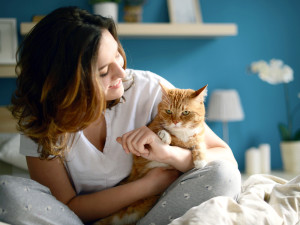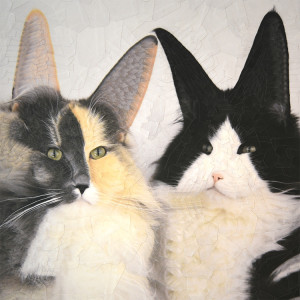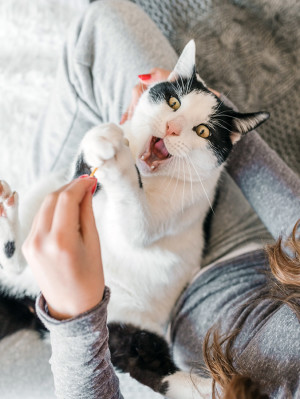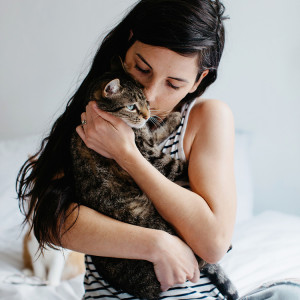Yes, It’s True: Study Says Cats Love People Who Don’t Like Cats
It’s not all in your head.
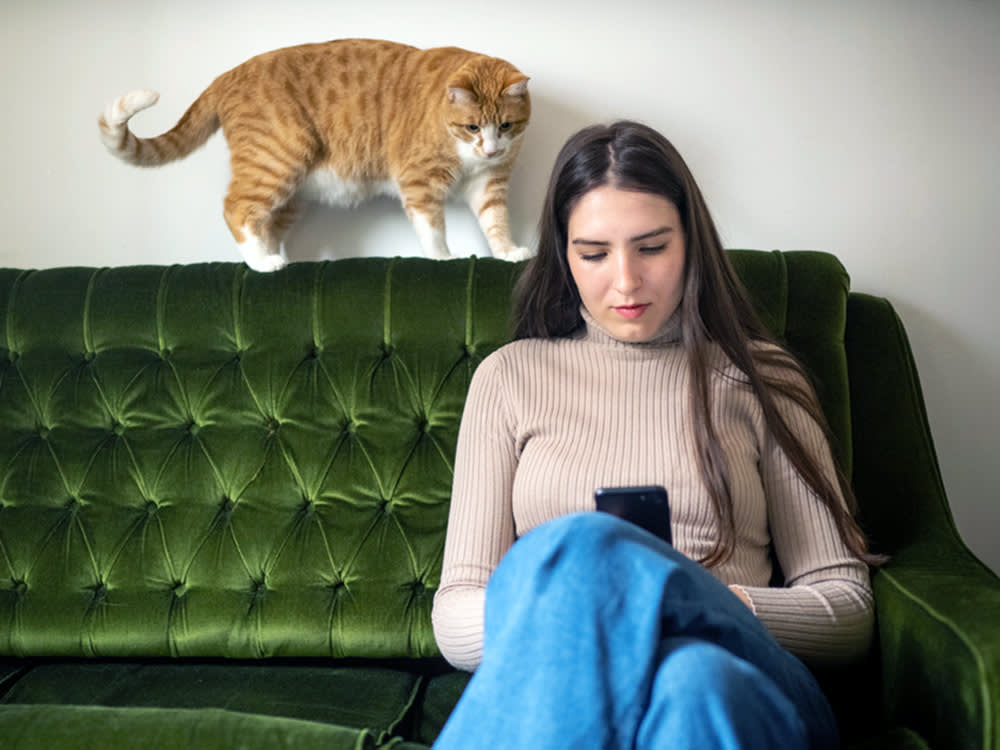
share article

Your pet wants you to read our newsletter. (Then give them a treat.)
Cat people know cats can be a little stand-offish. At least at first. On the other hand, a dog will run up to just about anyone who enters the house — either to defend their space or in search of belly rubsopens in a new tab — a cat’s attention, not to mention their affection, has to be earned, and that takes time.
Cat people also know that there is no better feeling in the world than being accepted by a cat. And the faster it happens, the better it feels. Seriously, walking into someone else’s house and instantly bonding with their cat is all a cat person wants.
“What’s that? Jelly Roll doesn’t usually like new people?” you say as you look your host dead in the eye and gently stroke Jelly Roll’s belly, something not even they are allowed to do, a mere five minutes after entering the room. “Well, what can I say? Cats just like me.”
Cat people are addicted to that feeling. They can’t get enough of a cat's love, acceptance, and affection. And they’re always thirsty for their next fix — so thirsty — which, according to a 2022 study published in the journal Natureopens in a new tab, is exactly why many cats prefer to avoid them. At least at first.
Cats actually prefer hanging out with people who don’t get them.
The study found that people who lived with cats and professed a greater self-assessed knowledge of cats, tended to interact with unfamiliar cats in ways that the cats found less desirable than people who had little to no previous feline experience.
The study’s authors came to this conclusion following an experiment involving 119 human volunteers and an assortment of neutered, non-purebred, adult cats.
Each cat was placed in an enclosure that gave them access to all their basic needs — food, water, litter, a place to hide, etc. A chair was also placed in the enclosure, near the entrance and away from the cat’s accoutrement. Human participants were instructed to enter the enclosure, sit down in the chair, and interact with the cats as they normally would, but not to pick them up.
The cat was then able to avoid or retreat from human interaction if they so chose. Each interaction lasted five minutes and was videotaped. Each person then repeated the experiment with two more cats in two additional enclosures.
According to the researchers, the cats responded best to people who were passive, yet responsive, and touched them minimally, sticking to the “green zones”: the base of the ears, cheeks, and underside of the chin. These people tended to avoid “red zones”: the belly and the base of the tale, where most cats hate being touched. They also stayed away from the “yellow zones”: the back, sides, and legs.
The people who behaved this way tended to be those with less cat experience and less self-professed cat knowledge. This makes sense, according to certified feline behavior and training consultant, Dr. Marci Koskiopens in a new tab, who was not involved with the study.
“There are a few reasons I can see this being true,” she says. “First of all, people who really like cats are apt to direct themselves at a cat — face them, stare directly at them, approach them — and cats tend to be like, ‘Whoa whoa whoa! This is way too much all at once.’ Cats make friends differently.”
They want you to ignore them.
According to Dr. Koski, even the act of staring too intently at a cat can freak them out. “The direct stare is the first step in the prey sequence and can potentially be an indication that what you are staring at is about to be hunted,” she says. She also points out that people look bigger and, thus, more menacing, when viewed head-on. For this reason, in a room full of new people, a cat will often be most drawn to the person who is paying the least attention to them, who they can approach when they are ready.
Of course, ignoring a new cat is easier said than done for cat people, and it is almost physically painful to see someone who doesn’t even particularly like cats receiving the lion’s share of their attention. Even Dr. Koski admits she sometimes has to fight the urge to interact with a cat as soon as she enters the room. But she does! And, sooner or later, her restraint is rewarded. Usually.
“I find that having a bag helps,” she says. “I go into people’s homes and 95 percent of the time, the cats will successfully come down and meet me and, often, the people are like, ‘Oh, this never happens!’ I think it’s because the first thing I do is ask for a place to talk. Then, I put my bag down on the floor. Cats always want to know what is in the bag.”
Keep the sound down.
Because many cats avoid loud noises, Dr. Koski also makes a point of talking quietly when she is in a client’s home. She simply waits and lets the cat come to her. “I’ll look around and usually the cat will be watching,” she says. “I think it helps them to see me talking to their people. Then they’ll come over and investigate the bag,” which usually contains “cat smelling things” like a catnip-stuffed banana kick toy. After a few minutes, she’ll put her hand down and let the cat have a sniff, at which point she is usually cleared for petting.
Of course, the people in Finka’s experiment had no such enticing toys on hand, but they also didn’t need them. The cats included in the experiment were all relatively social, as determined by the caregivers at their shelters, and were generally curious about the people in their enclosures. They just needed to chill and let the cats come to them.
References:

Charles Manning
Charles Manning is an actor, writer, and fashion/media consultant living in New York City with his two cats, Pumpkin and Bear. Follow him on Instagram @charlesemanningopens in a new tab.
Related articles
![a cat making an excited face at a person's hand]() opens in a new tab
opens in a new tabYour Cat Can Make Nearly 300 Unique Facial Expressions, Study Finds
They’re not so mysterious after all.
![]() opens in a new tab
opens in a new tabHow to Read Your Cat’s Poker Face
A guide to their not-so-secret tells.
![cat staring at person on table]() opens in a new tab
opens in a new tabWhy Does My Cat Stare at Me?
...Is it something you said?
![dark-haired woman hugging cat that has imprinted on her]() opens in a new tab
opens in a new tab10 Signs Your Cat Has Imprinted on You
Feeling like you have a little shadow these days? Here’s why that’s happening.
![Cat grabbing onto ledge of table and looking to the left]() opens in a new tab
opens in a new tabWhy Does My Cat Follow Me Everywhere?
Yes, they are right behind you.

